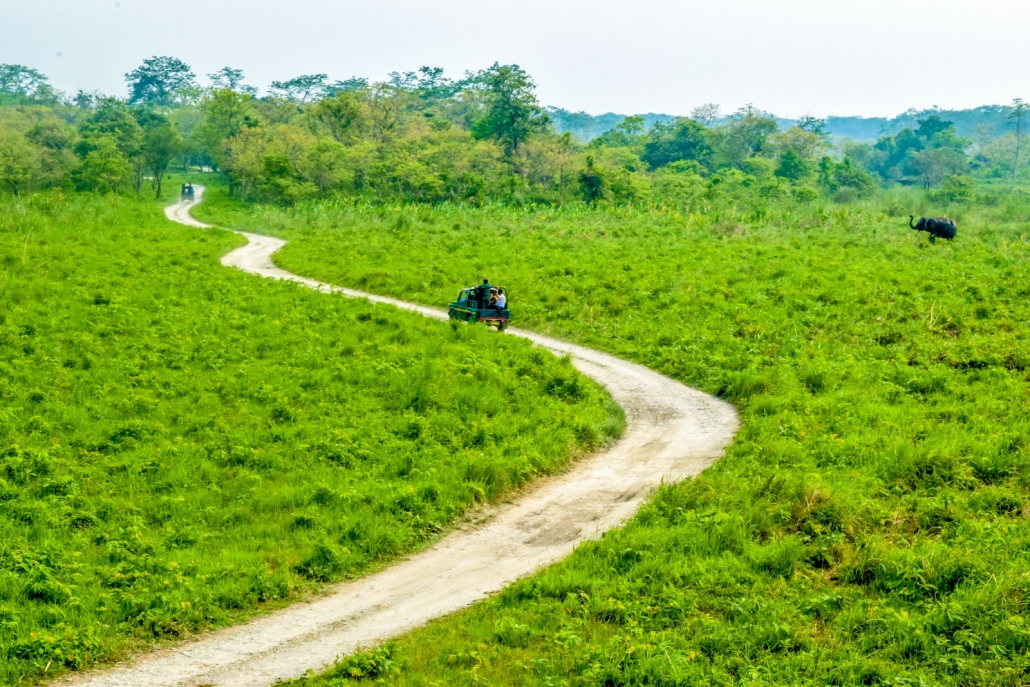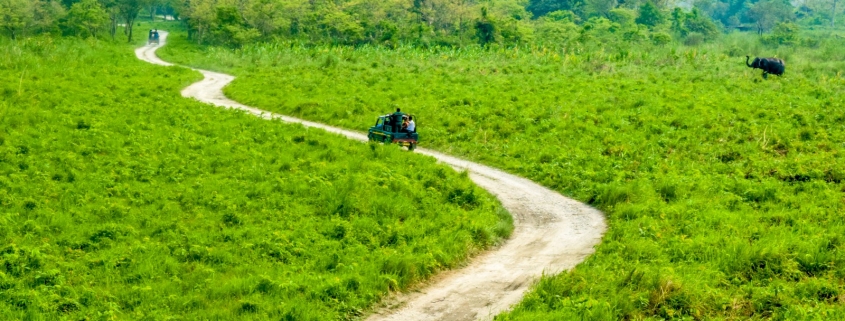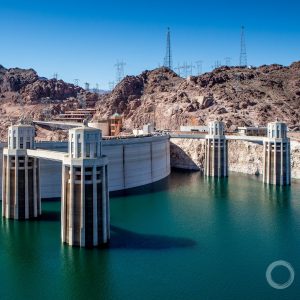HotSpots H2O: The Toto, One of the World’s Smallest Ethnic Groups, Face Water Shortages Along the India-Bhutan Border

Jaldapara National Park. Photo © Wikimedia Commons
Christian Thorsberg, Circle of Blue
The Himalayan foothills of West Bengal are home to some of the world’s most precious and resilient wildlife. Rare birds take sanctuary in the forests lining this eastern Indian state, a birdwatcher’s paradise; Bengal tigers and Indian gaur roam free, few in number yet breathtaking in real form; and an elephant corridor winds through Jaldapara National Park, abutting the floodplain domain of one-horned rhinoceroses.
Nestled among this beauty is the village of Totopara. For centuries it has been the home of the Toto, a tribe that sustainably hunts and farms within the region’s diverse ecology, and resides in raised bamboo huts that skim the treetops. The Toto knew this land when its native species were not endangered by illegal poaching, and thrived when the forests were free from clearcutting. With a population that hovers around 2,000, the Toto are today considered one of the world’s smallest ethnic groups, and, like their fellow Indigenous peoples from the Amazon to Australia, are experiencing the consequences of extractive industries.
The Toto’s new and unwelcome neighbors are the quarries that have been erected across the border in Bhutan’s Tading hills. Since 1987, the nearby hills have provided dolomite, limestone, and now, most profitable of all, quartzite. Extracting these materials requires substantial water usage, and to meet these needs, miners and workmen have been diverting the brooks and channels upstream from Totopara.
Until a few years ago, Bhutanese authorities supplied Totopara with water. But the quarrying uprooted large hunks of rock, blocking this supply. What used to be a plethora of water sources that reached the village is now but a single stream. Located deep in the forest, this spring itself is rapidly drying up, forcing the Toto to take matters into their own hands. In what resembles a complex bouquet of twisted wires, many residents have installed pipes in efforts to pump water from the forest to their homes.
Compounding this water shortage is the fine silt that continues to fall over the region, a consequence of quarrying that keeps a gritty taste in the air and then settles on the ground. The dehydrated stream beds and channel pathways are eroding as a result, growing wider and brushing closer against Totoparan homes. When the wet monsoon season arrives, at last filling these vacant beds, surging streams threaten to wear away Totopara’s infrastructure.
For a Toto community that has faced neglect and environmental racism for decades, the worst may be yet to come. In 2018, the West Bengal Power Development Corporation reached an agreement with the Indian government, establishing plans to build the world’s second largest coal mine next to Totopara. Of the project’s proposed 11,000 acres, over 9,000 belong to the Indigenous residents, Telegraph India reports.
“The government has been claiming just 784 families will be displaced, but the figures are fudged as the mining will be done in a large chunk of area that will devour water bodies, forest, agricultural land and houses,” Khokon Mardi, an Indigenous rights activist, told the Third Pole. Mardi estimates the true number of displaced people to be around 70,000. “Where we will go? They are simply trying to cajole us to rehabilitate in some other location but what about our livelihood? They simply have no answer.”
Christian Thorsberg is an environmental writer from Chicago. He is passionate about climate and cultural phenomena that often appear slow or invisible, and he examines these themes in his journalism, poetry, and fiction.







Thanks for the read.
My heart ❤️ aches for you …. You are being treated so badly ‼️